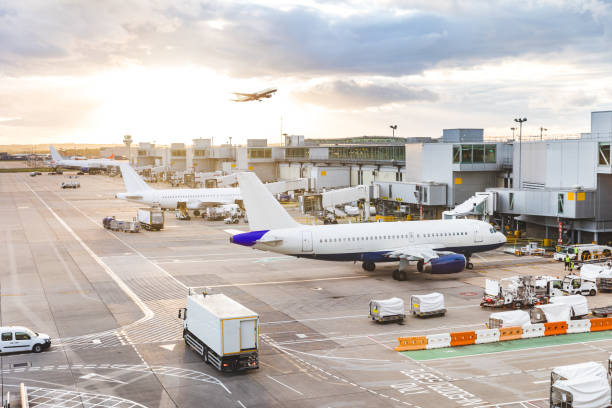
India is a big country, there are many airports present here. If we talk about the largest airport in India, then it is Indira Gandhi International Airport. This airport is not only the largest airport in India but also one of the busiest airports in India. This airport is named after the former Prime Minister of India Indira Gandhi, earlier it was also known as Palam Airport. This airport was unveiled in 2008 and the number of passengers here is increasing every year. If we estimate this increase, then every year 8 crore to 9 crore people come to this airport. So, here let’s know about the 10 largest airports in India.
Top 10 Largest Airports In India:
Transport mainly includes air transport service and we all know that it is very important to have an airport for the airplane to run. The more airports there are in the country, the more facilities the people of the country will get in air transport. In the past years, the work of building airports in the country has increased very fast and in the coming time, people of even the smallest cities will get the facility of air transport. So, see below the 10 largest Airports in India.
Indira Gandhi International Airport:
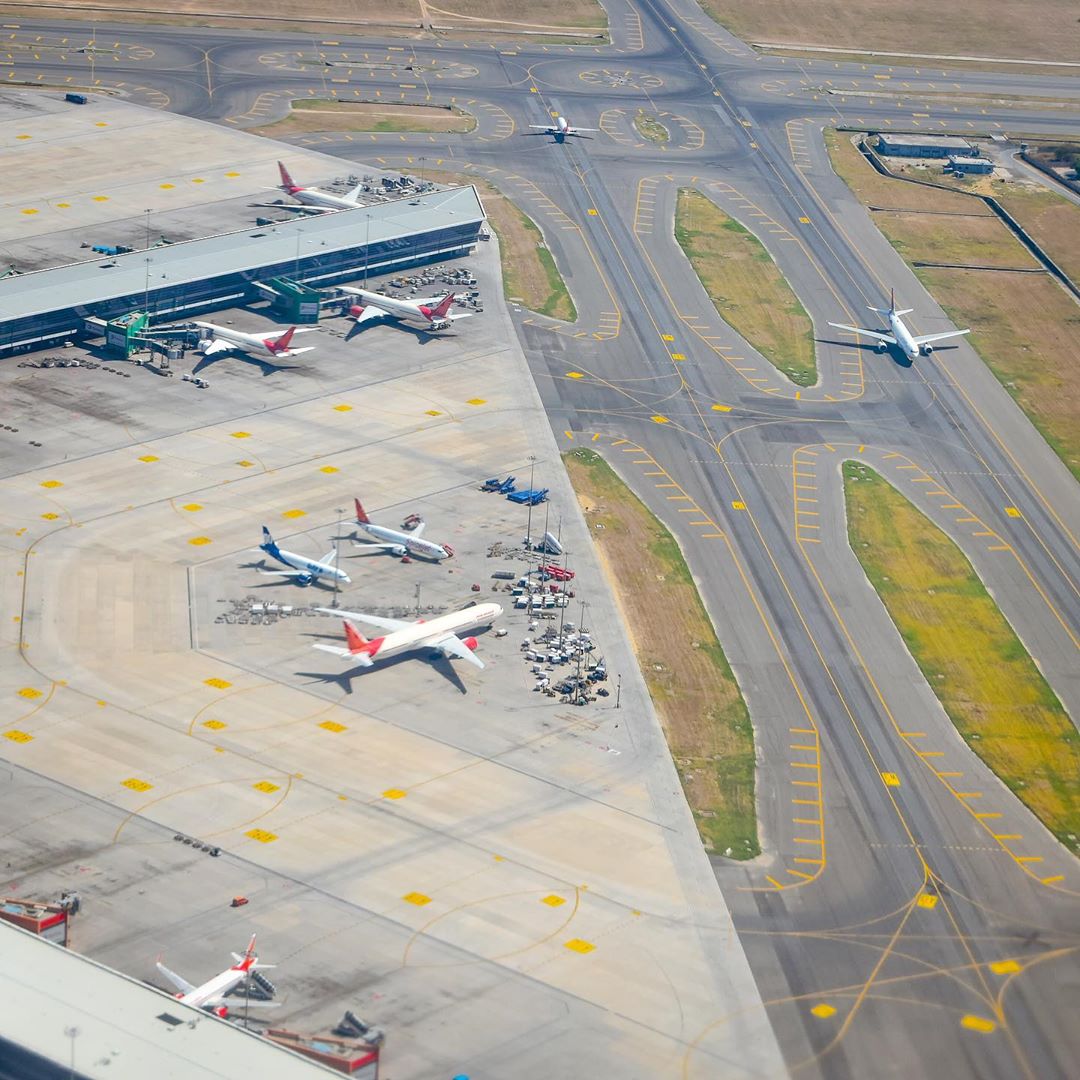
Indira Gandhi International Airport is the largest airport in India. It was built in the year 1930. The IATA code for the airport is DEL. ClearTrip information about various airline brands that are operated from New Delhi airport. So, here I am going to give you some information on Indira Gandhi International Airport.
There are various national and international airlines that operate from New Delhi Airport, among which airline brands mostly operated are AirMark Indonesian Aviation, Jet Airways, JetLite, and Jet Connect. Apart from this, the most popular areas are from New Delhi, from New Delhi to Mumbai, and New Delhi with 203, and 112 respectively weekly flights to Bengaluru.
Airport Details:-
Name: Indira Gandhi International Airport
State: Delhi
Address: New Delhi, Delhi 110037
Phone: 91 124 3376000
E-mail: [email protected]
Website: http://www.newdelhiairport.in/
Location:
The biggest airport in India, spread over a territory of 5,106 sections of land (2,066 ha), is arranged in Palam, 15 km (9.3 mi) south-west of the New Delhi railroad station and 16 km (9.9 mi) from New Delhi downtown area. Named after the previous Prime Minister of India Indira Gandhi, it is the in India as far as traveler traffic since 2009.
It is likewise the busiest airplane terminal in the nation regarding load traffic, overtaking Mumbai in late 2015. In the scheduled the year 2018, it was the 12th busiest airplane terminal in the world and the 6th busiest air terminal in Asia by traveler traffic dealing with almost 70 million travelers.
It is one of the world’s largest airports in India. The arranged development program will build the air terminal’s ability to deal with 100 million travelers by 2030.

Management:
The airplane terminal was worked by the Indian Air Force before its administration was moved to the Airports Authority of India. In May 2006, the administration of the air terminal was ignored by Delhi International Airport Limited (DIAL), a consortium driven by the GMR Group. In September 2008, the airport introduced a 4,430 m (14,530 ft) runway.
With the initiation of activities at Terminal 3 in 2010, it turned into India’s and South Asia’s biggest flying center point. The Terminal 3 building has the ability to deal with 34 million travelers yearly and is the world’s eighth-biggest traveler terminal.
The air terminal uses a propelled framework called Airport Collaborative Decision Making (A-CDM) to help keep takeoffs and landings timely and unsurprising.
Terminals:
IGI Airport fills in as a noteworthy center point or a central goal for a few Indian transporters including Air India, Air India Regional, IndiGo, SpiceJet, GoAir, and Vistara.
Roughly 80 carriers serve this air terminal. At present, there are three dynamic booked traveler terminals, a committed Hajj terminal, and a load terminal.

Domestic and International Operations
Terminal 3 is utilized for global tasks. All the Indian transporters working universal flights (the Indian bearers working for global flights as on 29 March 2019 are Air India, AirAsia, Indigo, SpiceJet, and GoAir. Vistara has likewise been allowed to work for global flights) and outside carriers utilize these Terminal 3 for flying their airship from and to Delhi.
To the extent residential tasks are concerned, it is again this Terminal 3 is utilized for that reason via Air India, AirAsia, and Vistara.
GoAir utilizes Terminal 2, while Indigo and SpiceJet utilize both Terminal 1 and Terminal 2 for their residential tasks.
Terminal 1:
Terminal 1 is at present utilized by minimal-effort transporters IndiGo and SpiceJet. DIAL is attempting to grow Terminal 1 and improve its yearly traveler dealing limit from the present 18 million to 30 million in four years by 2022.
Terminal 1A:
Terminal 1A was worked in the late 1980s to take into account Indian Airlines. It must be renovated after a flame gutted the insides and DIAL altogether overhauled the terminal.
It was utilized via Air India for its Airbus activities until it moved to the new Terminal 3 on 11 November 2010. The terminal is presently shut and is relied upon to be torn down on the finishing of more current terminals.
Terminal 1C:
Terminal 1C is utilized uniquely for local landings. The terminal has been updated with a recently extended welcome region and bigger baggage reclaim area with eight belts.
Terminal 1D:
Terminal 1D is the recently manufactured local takeoff terminal with an all-out floor space of 53,000 m2 (570,000 sq ft) and has the ability to deal with 15 million travelers each year.
Terminal 1D initiated activities on 19 April 2009. It has 72 Common Use Terminal Equipment (CUTE) enabled check-in counters, 16 self-registration, and 16 security channels.
Terminal 2:
Terminal 2 was opened on 1 May 1986, at a cost of ₹950 million, and was utilized for International flights until July 2010 when activities moved to T3.
After this, the terminal stayed operational for just three months out of each year taking into account Haj flights In 2017, subsequent to patching up terminal 2 at an expense of ₹1 billion, DIAL moved tasks of GoAir to the terminal from 29 October so as to proceed with development work of T1. Now, GoAir alongside SpiceJet and Indigo works for its day-by-day flights from this terminal.
Terminal 3:
Structured by HOK working in the conference with Mott MacDonald, the new Terminal 3 is a two-level structure spread over a zone of 20 sections of land (8.1 ha), with the lower floor being the landings zone, and the upper floor being a takeoffs zone.
This terminal has 168 registration counters, 78 aerobridges at 48 contact stands, 54 stopping coves, 95 movement counters, 15 X-ray screening zones, for less holding up without times, duty shops, and different highlights. This new terminal was coordinated to be finished for the 2010 Commonwealth Games, which was held in Delhi and is associated with Delhi by an eight-lane Delhi Gurgaon Expressway and the Delhi Metro.
The terminal was formally initiated on 3 July 2010. Every worldwide aircraft moved their tasks to the new terminal in late July 2010 and all full-administration local bearers in November 2010.
The entry zone is furnished with 14 baggage claims. T3 has India’s first automated leaving management and direction framework in a multi-level vehicle leave, which includes seven levels and a limit of 4,300 autos.
Terminal 3 shapes the primary period of the air terminal extension which probably incorporates the development of extra traveler and load terminals (Terminals 4, 5, and 6).
Local full-administration aircraft work from Terminal 3 including Air India, the national transporter. The Tata & Singapore Airlines airline joint-venture Vistara additionally works from Terminal 3. AirAsia India, in spite of the fact that a minimal-effort carrier, additionally works for its local flights from this terminal.
WorldMark is an up-and-coming blended-use venture in the Aerocity hospitality region close to Terminal 3.
Terminals 4, 5, and 6:
Terminals 4, 5, and 6 will be worked at a later stage, which will be activated by development in rush-hour gridlock, and once finished, every universal flight will move to these three new terminals, while Terminal 3 will at that point exclusively be utilized for taking care of residential air traffic.
A new cargo handling building is also planned. According to Delhi International Airport Limited (DIAL), these new terminals will increase the airport’s annual passenger volume capacity to 100 million.
DIAL submitted a plan in 2016 to the then aviation secretary R N Choubey regarding the expansion of the airport with a new fourth runway and Terminal 4 in a phased manner.
The Master Plan of the Airport in 2016 was then reviewed and updated by DIAL in consultation with the Airports Authority of India. The terminal construction will start after the completion of the fourth runway and the expansion of terminals 1 and 3.
Cargo:
The air cargo complex is located at a distance of 1 km (0.62 mi) from T3. It consists of separate brownfield and greenfield cargo terminals. The cargo operations at the brownfield terminal are managed by Celebi Delhi Cargo Management India Pvt. Ltd., which is a joint venture between Delhi International Airport Private Ltd (DIAL) and the Turkish company Celebi Ground Handling (CGH).
CGH was awarded the contract to develop, modernize, and finance the existing cargo terminal and to operate the terminal for a period of twenty-five years by DIAL in November 2009.
It started its operations in June 2010. In addition to the existing terminal, a new greenfield terminal is being developed in phases by Delhi Cargo Service Centre (DCSC), also a joint venture between DIAL and the Cargo Service Center (CSC). The Greenfield cargo terminal project consists of two terminals built over a plot of 48,000 square meters and 28,500 square meters respectively.
Phase 1A of the project has been completed and is fully operational. Once the entire project is completed, these two new terminals will have an annual handling capacity of 1.25 million tonnes. The cargo operations of the airport received the “e-Asia 2007” award in 2007 for “Implementation of e-Commerce / Electronic Data Interchange in Air Cargo Sector”.
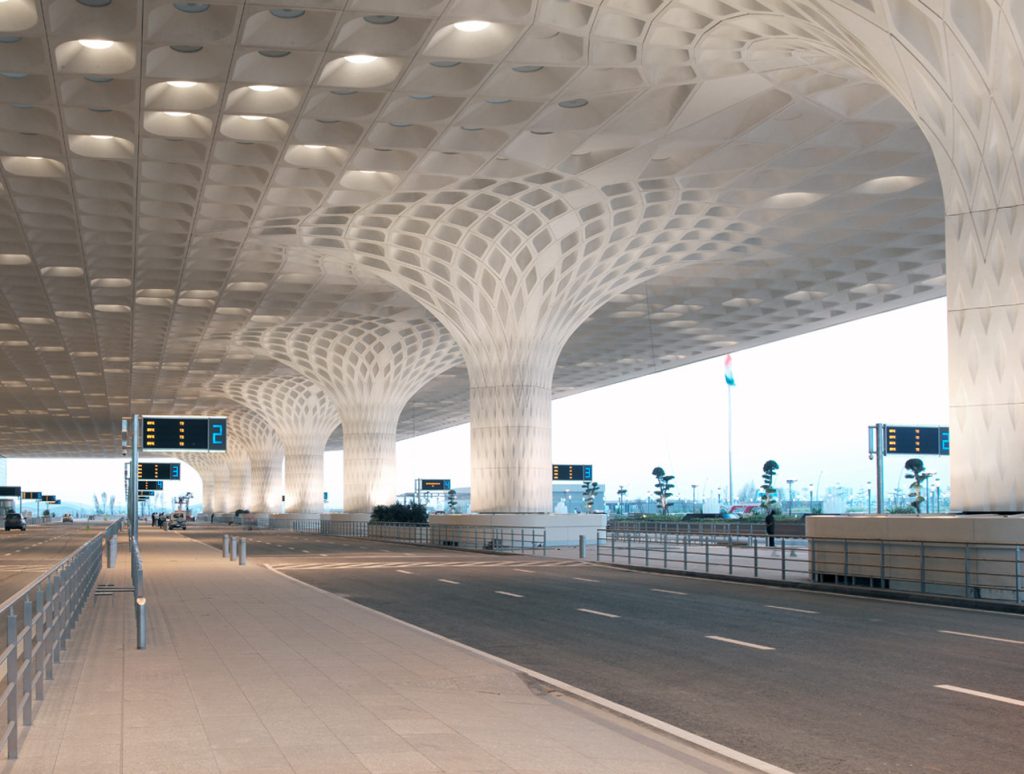
Chhatrapati Shivaji International Airport:
Spread over parts of Andheri, Vile Parle, and Santacruz areas, Mumbai’s Chhatrapati Shivaji International Airport is the second most important airport in India. In 2017, it served more than 48 million passengers. Its world-class facilities can be gauged from the fact that in the year 2017, it was selected as the best airport in the world along with Delhi Airport in the 40 MPPA category of the Airport Service Quality Awards. It has two terminals (T1 for low-cost flights and T2 for international and domestic operations) and two crisscrossing airstrips. One of its new services is the Jai Hey GVK New Museum (T2) which houses over 5000 objects that give a glimpse of India’s culture and history.
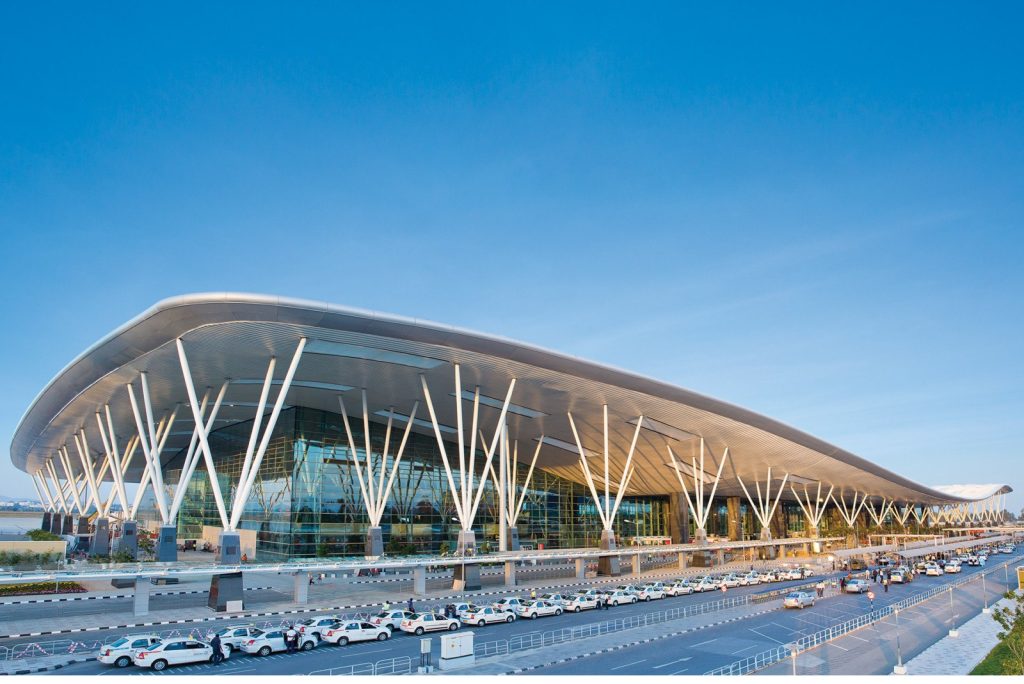
Kempegowda International Airport:
Bangalore’s Kempegowda International Airport, opened in 2008 to replace HAL Airport, has become the third busiest airport in the country. Despite having only one runway and terminal, it handled more than 195,000 flights in 2017 and served 25 million passengers. Gate numbers 25-26 in the international area of the terminal have been specially developed for the world’s largest aircraft, the Airbus A380. The airport is being expanded, and a new terminal and runway are being built to further increase its aircraft and passenger capacity. National Highway 44 connects the airport to Bangalore.
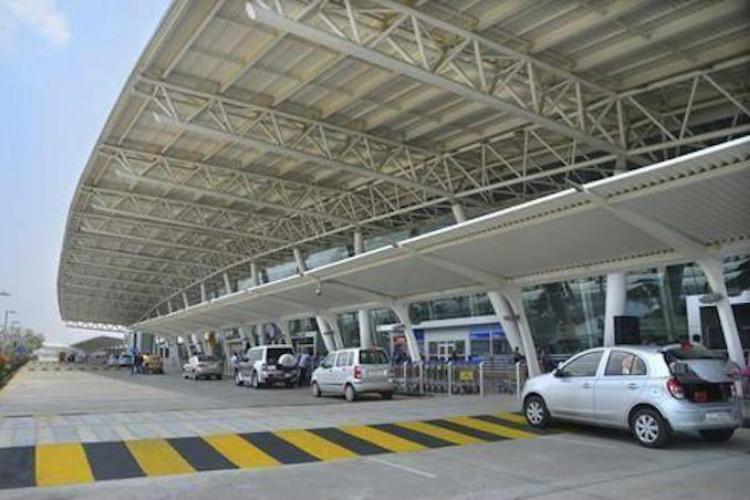
Chennai International Airport-(MAA):
One of the earliest civilian airports in India, Chennai International Airport is an important gateway to the country for people from South and Southeast Asia. With two terminals and two airstrips, it handled over 20 million passengers in the financial year 2017. Unlike other airports in India, it has two terminals adjacent to each other, and a building that houses restaurants and administrative offices connect the two. People can enjoy shopping here along with enjoying different cuisines.
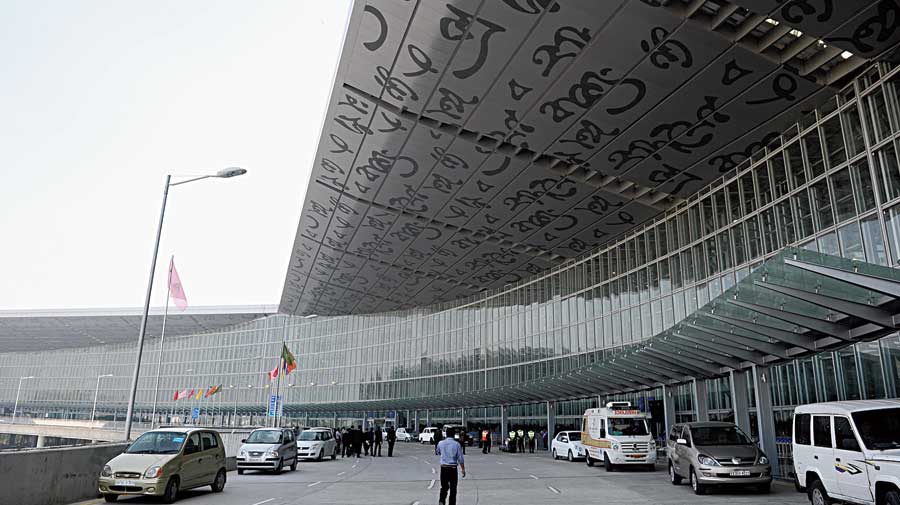
Netaji Subhash Chandra Bose International Airport-(CCU):
Kolkata’s Netaji Subhash Chandra Bose International Airport is etched in history as the fateful flight of Amelia Earhart in 1937 passed through here. Due to the increase in the number of passengers and aircraft, the expansion of the airport started in 2005. In addition to increasing the length of the runway, CAT III landing system equipment was also installed here. The airport, which handled just under 20 million passengers in the fiscal year 2017, is expected to handle over 26 million soon. Currently, international airlines such as Air India, Biman Bangladesh, Bhutan Airlines, Emirates, Etihad Airways, Myanmar Airways International, China Eastern Airlines, Cathay Dragon, Silk Air, Singapore Airlines, Sri Lankan Airlines, and Thai Airways are serving here.
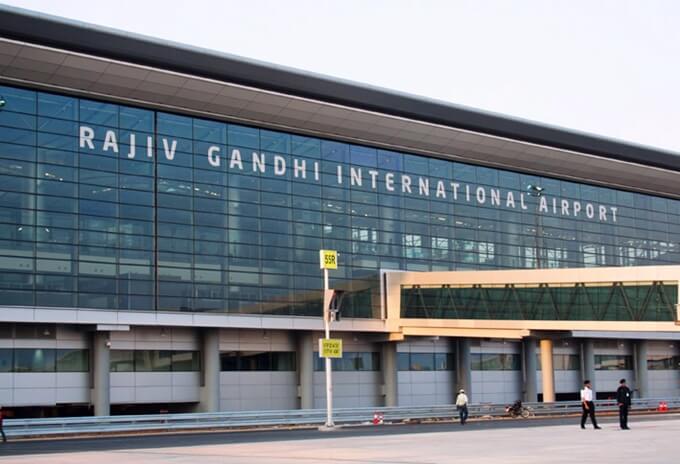
Rajiv Gandhi International Airport-(HYD):
This new airport was launched in 2008 when the Begumpet airport was unable to handle the increasing number of passengers. In just 9 years, it handled around 18 million passengers in 2017 surpassing its peak passenger handling capacity of 12 million.
Airport Village is one of its specialties which is nothing less than a gift for the passengers passing through here.
Passengers staying here can meet their relatives and friends in the village just outside the arrival area. Like other airports, there is also expansion work to be done here. Here this work will be done in three phases. Its capacity will be increased to 18 million passengers in Phase I, 20 million in Phase II, and 40 million in Phase III.
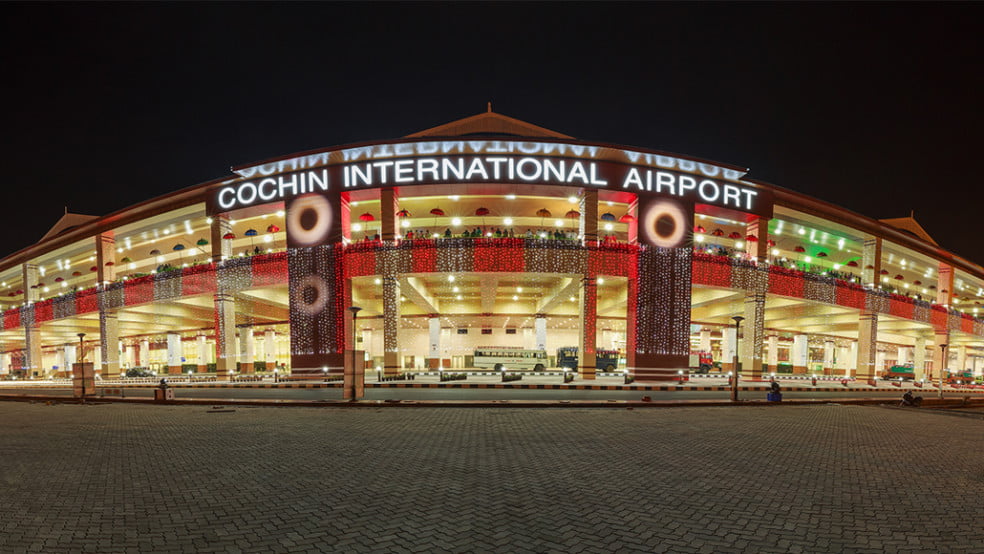
Cochin International Airport-(COK):
The Cochin International Airport, which opened in 1999, is a fine example of Kerala’s traditional architecture. It currently has two domestic terminals and one international terminal, making it the second airport in India after Delhi to have three terminals. With three terminals, it has a total capacity of 21 million passengers, which is much more than the current number of passengers. In the fiscal year 2017, less than 10.5 million passengers flew through this airport. It has become the first airport in India to be fully powered by solar energy! Foreign destinations like Sharjah, Kuala Lumpur, Dubai, Jeddah, Dammam, Bahrain, Muscat, Doha, Kuwait, Singapore, Riyadh, Bangkok, and Colombo are directly connected to Kochi.
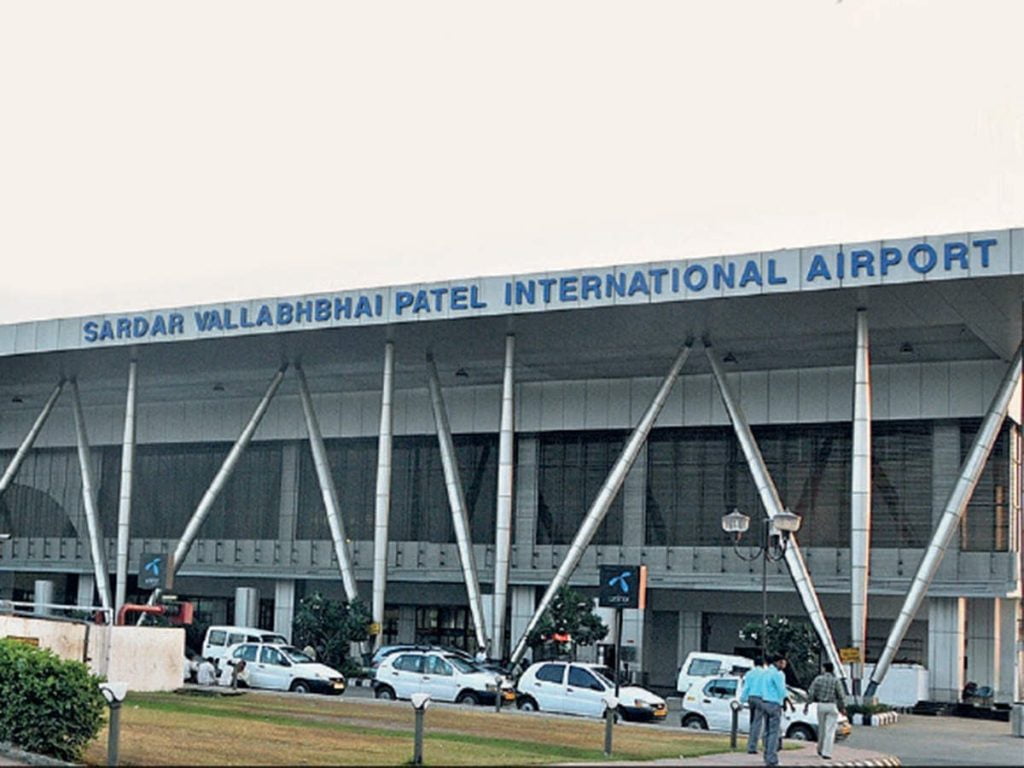
Sardar Vallabhbhai Patel International Airport-(AMD):
Although this airport has been operating since 1937, international flights started from here in 1991. Its current maximum capacity is 8.5 million people, but it has already handled over 9 million passengers in 2017. It has two terminals: T1 for domestic flights, and T2 for international and domestic traffic. These are connected by a travelator or automated way of about 500 meters long. Transit travelers can relax in the plush BICA Lounge in Terminal 1 and the Port inside Terminal 2. In addition to lounges, there are several duty-free shops and a cafeteria with restaurants.
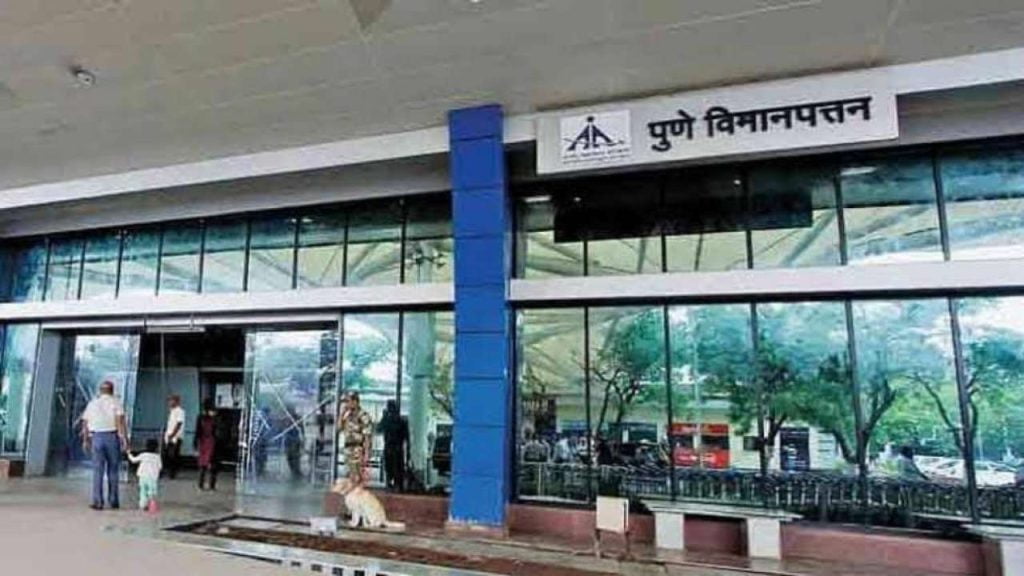
Pune Airport-(PNQ):
Pune Airport is currently the ninth busiest airport in India, with over 8 million passengers in FY 2017. A part of this airport, established as an air base by the Royal Air Force, is still under the Indian Air Force. It has two runways, of which only one is used for flights; The other is used as a taxiway for military aircraft. As part of the renovation plan, the length of the runway is being increased for larger aircraft. Also, a VIP lounge and other facilities will be developed inside the terminal by moving the administrative offices to a separate building.
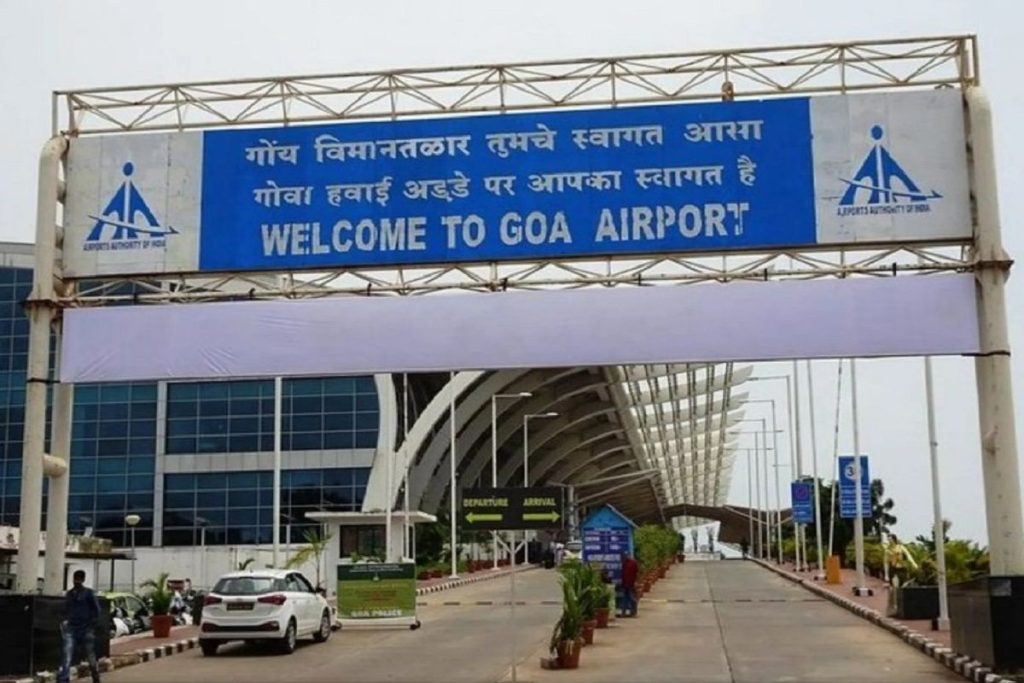
Dabolim Airport-(GOI):
Goa’s Dabolim airport built on the seashore is probably the most beautiful airport in the country. Built by the Portuguese in 1955, the airport serves partly as a civilian airport and partly as an airbase for the Indian Navy. The terminal, which opened in 2013, is operating at its maximum capacity, serving 7.6 million passengers every year. In FI 2017, more than 50000 flights were handled from here which included scheduled, chartered, and seasonal flights. Moscow, Saint Petersburg, Manchester, Kyiv, Birmingham, and Helsinki are among the international destinations served by scheduled or seasonal flights.
Conclusion:
Air transport is very important for the development of any country, it is the foundation of the economy of that country. If it cannot be improved in time, then it can become the biggest obstacle to the progress of that country. There are about 39 International Airports and 486 National Airports in India. This number is increasing continuously as the demand for air travel increases.
FAQ:
Q. What is the name of the largest airport in India?
A. The largest international airport in India is Indira Gandhi International Airport. It is spread over an area of 5106 acres. This airport was built in 1966 as Palam Airport.
Q. How many national airports are there in India?
A. According to the updated report of the Airport Authority of India, there is a total of 153 airports in India.
Q. Where is the smallest airport in India?
A. Trichy’s airport is the smallest airport in India.
Q. Which is the first airport in India?
A. Juhu Airport is India’s first civilian airport, it is located in Mumbai, and it was opened in 1928 under the name of Vileparle Aviation Club, on 15 October 1932 India’s first civilian flight to Karachi. In 1932, JRD Tata landed at Juhu airport, inaugurating India’s first scheduled commercial mail service. Juhu served as the city’s primary airport during and after World War II.
Q. Which state has the highest number of airports in India?
A. Uttar Pradesh. Kushinagar, Lucknow, and Varanasi are the three international airports in the state that are currently in service. However, with two additional airports under development at Jewar and Ayodhya, Uttar Pradesh now has a total of five airports, making it the state with the most airports in the country.
Q. Which states do not have an airport in India?
A. Which state does not have any airport in India? The state of India does not have an airport in Arunachal Pradesh. To reach India’s most northeastern state, you can take a flight to Ujjalpur in Assam to land at Lilabari Airport.
Recommended Articles:-


